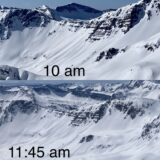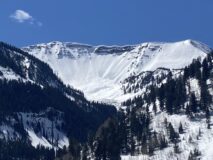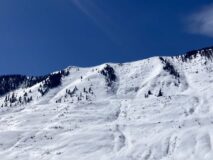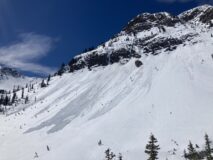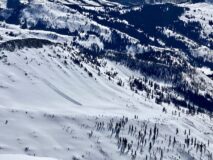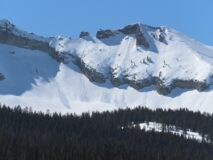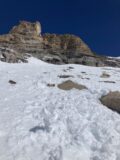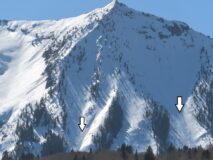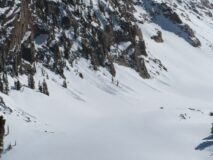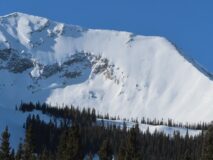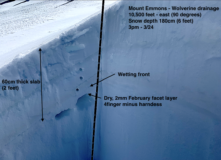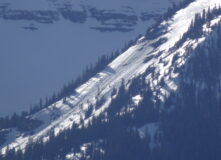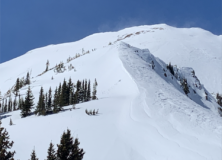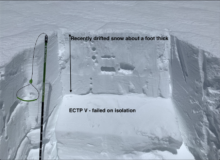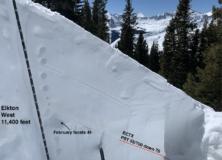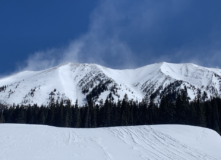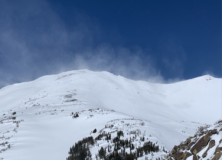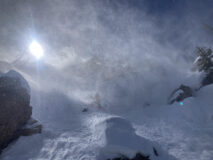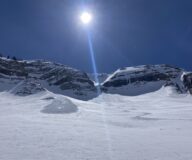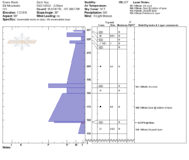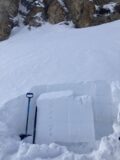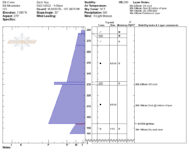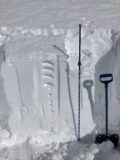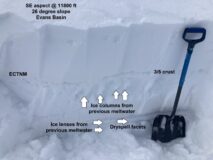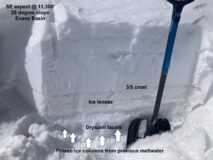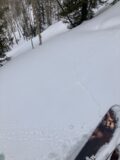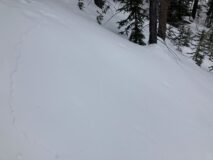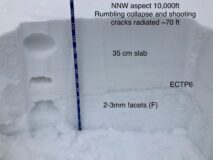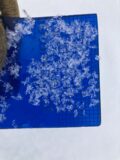Wet loose expanding to northeast aspects
Date of Observation: 03/26/2022
Name: Zach Guy
Zone: Northwest Mountains
Route Description: Poverty Gulch and Slate River Road. Traveled on E, SE, and S aspects to 12,600 ft on Mineral Point.
Observed avalanche activity: Yes
Avalanches: East-northeast aspects were fairly active by late morning for wet loose activity, with a handful of D1.5 near and below treeline, and a dozen or so D1s at all elevations. Also a handful of ~D1.5 wet loose on easterly and westerly aspects ran yesterday. A few of these were close, if not to D2 in size.
Weather: Warm, scattered to few clouds this morning. Light to moderate westerly winds at our high point.
Snowpack: Surfaces were frozen and supportive this morning. By 11 or so, we saw natural wet loose activity on easterly aspects. By 11:45, south-facing terrain NTL was producing rollerballs, small wet sluffs to ski cuts, and becoming trap door. At noon, east-facing slopes NTL were producing large pinwheels and rollerballs in the top 10″ or so.
Surfaces are noticeably more hardened by last week’s wind event above treeline and that seems to be helping moderate the effects of meltwater into the snowpack where we traveled, along with a breeze today helping keep surfaces a bit cooler up high.
Photos:
- The bulk of these sluffs ran yesterday. A few more ran late morning. ENE aspect near Daisy Pass
- I think these all ran today. Redwell Basin, sluffs on E to NE aspects.
- A pair of broad but fairly shallow wet loose piles on Schuylkill Ridge ran today. ENE aspects
- A couple of these ran today, a few ran yesterday. E aspect below Cascade Peak.
- A few wet loose avalanches on SW aspects of Purple Ridge ran yesterday.
5508





